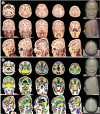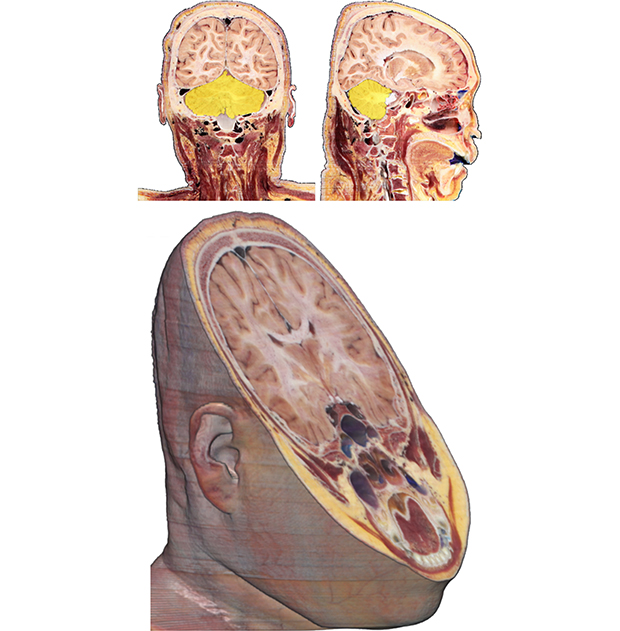1. Greenspan H, Oz G, Kiryati N, Peled S. MRI inter-slice reconstruction using super-resolution. Magn Reson Imaging. 2002; 20(5):437–446.


2. Starr PA, Martin AJ, Larson PS. Implantation of deep brain stimulator electrodes using interventional MRI. Neurosurg Clin N Am. 2009; 20(2):193–203.


3. Hertel F, Husch A, Dooms G, Bernard F, Gemmar P. Susceptibility-weighted MRI for deep brain stimulation: potentials in trajectory planning. Stereotact Funct Neurosurg. 2015; 93(5):303–308.


4. Cabanis EA, Iba-Zizen MT, Coin JL, Guillaumat L, Pineau H. Visual pathways, a “new” plane of orientation of the head (neuro-ocular plane). Bull Soc Ophtalmol Fr. 1981; 81(4-5):433–439.

5. Tamraz J, Iba-Zizen MT, Atieyh M, Cabanis EA. Atlas of the anatomy of the head in the neuro-ocular plane: presentation. Bull Soc Ophtalmol Fr. 1985; 85(8-9):853–857.

6. Bolondi L, Correas JM, Lencioni R, Weskott HP, Piscaglia F. New perspectives for the use of contrast-enhanced liver ultrasound in clinical practice. Dig Liver Dis. 2007; 39(2):187–195.


7. Grewal J, Mankad S, Freeman WK, Click RL, Suri RM, Abel MD, et al. Real-time three-dimensional transesophageal echocardiography in the intraoperative assessment of mitral valve disease. J Am Soc Echocardiogr. 2009; 22(1):34–41.


8. Jarvis D, Akram R, Mandefield L, Paddock M, Armitage P, Griffiths PD. Quantification of total fetal brain volume using 3D MR imaging data acquired in utero. Prenat Diagn. 2016; 36(13):1225–1232.


9. Zhao SX, Xiao YH, Lv FR, Zhang ZW, Sheng B, Ma HL. Lateral ventricular volume measurement by 3D MR hydrography in fetal ventriculomegaly and normal lateral ventricles. J Magn Reson Imaging. 2018; 48(1):266–273.


11. Park JS, Jung YW, Choi HD, Lee AK. VK-phantom male with 583 structures and female with 459 structures, based on the sectioned images of a male and a female, for computational dosimetry. J Radiat Res (Tokyo). 2018; 59(3):338–380.

12. Pflesser B, Petersik A, Pommert A, Riemer M, Schubert R, Tiede U, et al. Exploring the visible human's inner organs with the VOXEL-MAN 3D navigator. Stud Health Technol Inform. 2001; 81:379–385.

13. Chung BS, Shin DS, Brown P, Choi J, Chung MS. Virtual dissection table including the Visible Korean images, complemented by free software of the same data. Int J Morphol. 2015; 33(2):440–445.

14. Spitzer VM, Whitlock DG. The Visible Human Dataset: the anatomical platform for human simulation. Anat Rec. 1998; 253(2):49–57.


15. Park JS, Chung MS, Hwang SB, Lee YS, Har DH, Park HS. Visible Korean human: improved serially sectioned images of the entire body. IEEE Trans Med Imaging. 2005; 24(3):352–360.

16. Zhang SX, Heng PA, Liu ZJ. Chinese Visible Human Project. Clin Anat. 2006; 19(3):204–215.


18. Schiemann T, Freudenberg J, Pflesser B, Pommert A, Priesmeyer K, Riemer M, et al. Exploring the Visible Human using the VOXEL-MAN framework. Comput Med Imaging Graph. 2000; 24(3):127–132.


19. Park JS, Chung MS, Shin DS, Har DH, Cho ZH, Kim YB, et al. Sectioned images of the cadaver head including the brain and correspondences with ultrahigh field 7.0 T MRIs. Proc IEEE. 2009; 97(12):1988–1996.
21. Li X, Morgan PS, Ashburner J, Smith J, Rorden C. The first step for neuroimaging data analysis: DICOM to NIfTI conversion. J Neurosci Methods. 2016; 264:47–56.


25. Jack CR Jr, Petersen RC, O'Brien PC, Tangalos EG. MR-based hippocampal volumetry in the diagnosis of Alzheimer's disease. Neurology. 1992; 42(1):183–188.


26. Dohrmann GJ, Rubin JM. History of intraoperative ultrasound in neurosurgery. Neurosurg Clin N Am. 2001; 12(1):155–166. ix


27. Park HS, Shin DS, Cho DH, Jung YW, Park JS. Improved sectioned images and surface models of the whole dog body. Ann Anat. 2014; 196(5):352–359.


28. Park HS, Choi DH, Park JS. Improved sectioned images and surface models of the whole female body. Int J Morphol. 2015; 33(4):1323–1332.











 PDF
PDF Citation
Citation Print
Print




 XML Download
XML Download